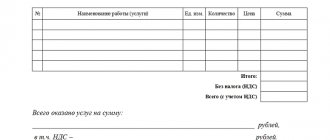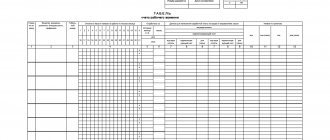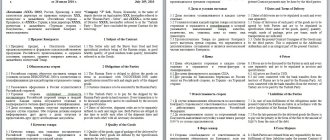Normative base
Order of the Ministry of Health and Social Development of Russia dated 05/02/2012 N 441n “On approval of the Procedure for issuing certificates and medical reports by medical organizations”
Resolution of the State Committee for Labor of the USSR, the Secretariat of the All-Union Central Council of Trade Unions, the Ministry of Health of the USSR dated 12/31/1987 N 794/33-82 “On approval of the Basic Provisions on the rotational method of organizing work »
Decree of the Government of the Russian Federation dated 03.02.2005 N 51 “On the amount and procedure for paying bonuses for shift work to employees of federal government bodies and federal government institutions”
Formation of a rotation team
The use of the rotation method of organizing labor relations can be used both as a whole for the entire personnel of the enterprise, and for its individual teams or sections. The formation of a rotation team occurs through the selection of employees who agree to temporarily move to another territory to perform their professional duties. The employer must ensure (or compensate) the delivery of personnel from a specially designated place (collection point) to the shift and back (at the end of the shift). The movement of workers from their place of residence to the place of assembly can also be organized or compensated by the employer, but such compensation remains at the discretion of the employer.
IMPORTANT! It should be noted that a shift is not a business trip; it is just a specific form of organizing labor relations between employer and employee.
What is a watch and where is it used?
The shift method of work according to the Labor Code is regulated by Chapter 47. In general, the Labor Code of the Russian Federation understands the shift method (the shift itself) as the sum of the time of work and the rest interval between shifts.
Work on a rotational basis () is limited in duration to a period of a month. Exceptions include special cases at individual sites, due to which the specified period may be extended to 3 months (for this, the opinion of the workers’ trade union body, if there is one, must be taken into account). In its absence, they act within the framework of Art. 74 TK
The shift method of the Labor Code of the Russian Federation provides a guarantee of providing workers with housing when they are at the work site (Article 297).
The designated type of activity is used in oil and gas and coal mining, development of precious metals, fishing, logging, as well as in the field of transport, construction, geology and others.
The procedure for providing guarantees and compensation provided for by current legislation
6.1. Employees are granted annual leave in accordance with the established procedure after using their rest days (time off).
6.2. If the end of an employee’s annual leave falls on the inter-shift rest days of the team in which he works, then the employee before the start of the shift is given another job at the enterprise while maintaining the average earnings for the previous job.
By agreement of the parties, the issue of granting this employee leave without pay can be resolved.
6.3. In the event of temporary incapacity for work for employees performing work on a rotational basis, during the period of rest (time off) provided to them, benefits for days of incapacity for work that coincide with days of rest are not issued. If temporary disability continues after the end of the rest period, the benefit is issued from the day on which the employee must begin work. In this case, the benefit is issued for working hours missed due to disability, according to a schedule drawn up within the limits of the working time norm established by law.
back to contents
Who can work a shift
Work on a rotational basis according to the Labor Code of the Russian Federation (based on Article 298) is available to the following persons:
- adults;
- non-pregnant and without children under three years of age (female criterion);
- for fathers or guardians of children under three years of age, if they are not raising them alone;
- without medical contraindications, according to the conclusion issued in the manner prescribed in Order of the Ministry of Health and Social Development of Russia dated May 2, 2012 No. 441n.
Body check
Employees going on shift must undergo a mandatory medical examination in the manner prescribed by Order of the Ministry of Health and Social Development of Russia dated April 12, 2011 No. 302n (Articles 213, 298 of the Labor Code of the Russian Federation). Since construction and other work in remote, sparsely populated, hard-to-reach, swampy and mountainous areas (including the rotational expedition method) are contained in the list of works during which preliminary and periodic medical examinations (examinations) are carried out (approved by order of the Ministry of Health and Social Development of Russia from April 12, 2011 No. 302n). Medical contraindications when working on a shift are established by paragraphs 48, 49 of the Procedure approved by order of the Ministry of Health and Social Development of Russia dated April 12, 2011 No. 302n.
What is a watch for?
The Labor Code reserves the shift method of work for cases where the place of work or the employer is located at a significant distance from the permanent residence of employees and it is necessary to carry out production processes or activities listed above. The shift is also suitable for cases when it is necessary to quickly build, re-arrange or repair objects with social, production or other tasks in areas that are remote, uninhabited or in conditions of a specific nature.
Sanitary book
For each employee working on a rotational basis, it is necessary to have a health record book, which must indicate:
- conclusions of preliminary (upon entry to work) and periodic examinations, as well as examination by a therapist before being sent on duty;
- information about vaccinations.
This is stated in paragraph 8.7 of the Basic Provisions approved by Resolution of the USSR State Committee for Labor, the Secretariat of the All-Union Central Council of Trade Unions, and the USSR Ministry of Health dated December 31, 1987 No. 794/33-82.
The registration of a health certificate is paid for by the employer (Article 213 of the Labor Code of the Russian Federation).
When organizing work on a rotational basis, it is necessary to take into account the following features.
How to introduce a shift at an enterprise
The rotation method, namely the system of its application, is introduced by the employer. Before making an appropriate decision, a draft local regulatory act plus justifications for it are submitted to the elected body of the primary trade union organization that defends the interests of workers (all or the majority).
This body, a maximum of five working days after receiving the project, sends the employer its written reasoned opinion on it. When it is negative or includes proposals to improve the project, the employer has two options:
- Agree with this opinion.
- It is mandatory to reach a consensus through additional consultations (within three days) after receiving an opinion.
The employer can approve the appropriate act without the consent of the elected body. Contradictions are reflected in the protocol, after which the act becomes valid. The elected body of workers may appeal against an act introduced in this way in the relevant state labor inspectorate or in a court of general jurisdiction. The said body has the right to initiate a collective labor dispute in accordance with Chapter 61 of the Labor Code. But that's if it exists. If there is no trade union, the employer introduces new working conditions in compliance with the procedure prescribed in Art. 74 Labor Code of the Russian Federation.
Transferring already working frames to this mode occurs through the following sequence of steps:
- Written notice of transfer to rotational work with a note of consent to such work (two months before the transfer). If someone does not agree to the transfer, they are offered any vacancy. In the absence of such or the person’s refusal of the proposals, the employment contract is terminated.
- Changing the employment contract through the approval of an additional agreement.
- Registration of a transfer order.
Sample order to start a shift
Peculiarities of organizing a shift in Moscow and St. Petersburg
Not only in the North, but also in large cities there is a great need for labor. But large companies are more loyal to employees and do not always look at the experience, length of service of employees, education and existing skills. Large cities such as St. Petersburg and Moscow are constantly expanding, which naturally increases the need for construction companies.
The vacancies offered in the labor markets in the capitals are associated not only with construction, but also with the increase and improvement of infrastructure; foremen, drivers, loaders, security guards, workers in super and hypermarkets are always needed. Not every woman will be able to find such employment for herself, but there are vacancies for them too - warehouse manager, nanny, nurse, au pair, cashier in a store and everything related to the service sector. There is a lot of competition in all these fields, which increases the number of vacancies.
This organization of work is beneficial to the employer, because it significantly increases productivity. In this case, the hiring party must provide employees with all living conditions and ensure reception. These are either specially created residential towns or places in dormitories. And, before going to work on a shift, it is worth clarifying the issue of living conditions with the employer.
Work and rest schedule during shift work
The shift work schedule of the Labor Code of the Russian Federation is stipulated in Art. 301, as well as in section 4 of the Resolution of the State Committee for Labor of the USSR, the Secretariat of the All-Union Central Council of Trade Unions, the Ministry of Health of the USSR dated December 31, 1987 No. 794/33-82.
The shift method according to the Labor Code of the Russian Federation is implemented with summarized accounting (Article 104 of the Labor Code) of working time for a month, a quarter, a longer period, or a maximum of a year.
The working shift schedule fixes the duration of work and rest for the accounting period (applies to all working time, as well as travel time from the assembly point or place where the employer is located to the place of work). This schedule is entered by the employer in the same mode as the shift itself. Employees are notified of this innovation at least two months before it takes effect.
The schedule takes into account the time required to transport workers to and from their shifts. But the days of travel to and from work may affect inter-shift rest, since they are excluded from labor time.
Scheduled overtime hours, when they are not a multiple of a full workday, can be accumulated and combined into full working days, which entails the provision of additional days of inter-shift rest.
The maximum duration of a daily work shift is 12 hours. Workers' rest between shifts, including lunch breaks, can also last half a day. The time of daily (between shifts) rest, which is underused in this case, and the days of weekly rest are summed up and provided as additional days off from work (inter-shift rest time) in the accounting period. Weekly rest, which can affect any days of the week according to the number of days in the current month, must be minimally equal to the number of full weeks of this month.
Sample shift work schedule
Organization of rotation camps
3.1. Shift camps, built according to [standard/individual] projects, including a general plan of the village with reference to the area, are a complex of residential, cultural, welfare, sanitary and utility buildings and structures designed to ensure the livelihoods of the involved workers during their rest period on shift, as well as maintenance of construction and special equipment, vehicles, storage of inventories.
3.2. Responsibility for the maintenance of rotational camps, the organization of consumer services, political, educational and cultural work with residents rests with the administration and the trade union committee [indicate the name of the enterprise], and the internal service schedule is also approved for all residents in the rotational camp.
3.3. The design of the rotational camp is coordinated with the relevant trade union committee and state sanitary and fire supervision authorities and approved by the head of [insert name of the enterprise].
3.4. The readiness of the rotation camp for its transfer into operation is determined by the commission. The commission's act on acceptance of the rotational camp for operation is approved by the head of [insert the name of the enterprise].
3.5. Accommodation of rotational personnel during the period of inter-shift rest in rotational camps is prohibited.
3.6. There is no charge for accommodation during the shift period for those working on a rotational basis.
back to contents
How is such work paid?
Payment for work on a rotational basis is noted in Art. 302. Any calendar day of being at work during the rotation period, as well as the actual days of travel from the place where the employer is located (collection point) to the place where work tasks are performed and back, is paid with an allowance that replaces the daily allowance. Its amount and payment procedure depend on what kind of organization the employer is. If this is a federal public sector employee, then the corresponding parameters of the allowance are determined by Decree of the Government of the Russian Federation dated 02/03/2005 No. 51 or similar standards of a specific subject of the Russian Federation, a municipality, if this is a public sector employee of the appropriate level.
For other companies, the bonus is specified in labor, collective agreements or local regulations.
For each travel day to and from the workplace, for days of travel delay due to weather or due to the fault of the carrier, the employee receives a daily rate. He receives it for any overworked day of rest according to the schedule (day of inter-shift rest). Labor, collective agreements, local regulations may determine higher pay.
Shift workers from other regions who work in the Far North and similar areas are given a regional coefficient and are paid percentage bonuses to their salaries in the manner and amount that are provided for persons who continuously work in such places.
Let's sum it up
- The shift work method not only has a number of common features that distinguish it from other possible work modes. The fact that it can be used in completely different industries gives it a specificity that is specific to each of these industries. However, the specific conditions for using this method are detailed by each employer independently.
- The conditions for using the rotation method that apply to a particular employer are fixed by him in an internal regulatory act - the regulation on the rotation method. This document operates along with other internal documents devoted to issues of labor organization and remuneration. The regulations on the shift method are approved before the start of this method, and its contents are brought to the attention of workers who will work in this mode, against signature.
Work on a rotational basis - registration according to the Labor Code of the Russian Federation
Shift workers are registered for work through a corresponding employment contract, which structurally displays the following information:
- Employee and employer data.
- General provisions.
- Terms of payment.
- Temporary mode of work and rest.
- Working conditions plus guarantees and compensation.
- Compulsory insurance (social, pension, medical).
- Rights and obligations of the employee and employer.
- Their responsibility.
- Training in safe working methods.
- Final provisions.
- Details and signatures of the employee and employer.
Sample employment contract
Shift work under contract: nuances
A shift is a form of labor organization in which a person, during the period established by the employment contract, performs his labor duties at facilities located outside his place of permanent residence.
A shift should be fundamentally distinguished from a business trip (which also involves a person performing work outside his place of residence) from the point of view of:
1. Deadlines.
The duration of a business trip is not limited by law. Shifts are generally limited to 1 month of continuous work (3 if permitted by the trade union).
2. Purposes of the trip.
An employee sent on a business trip carries out a specific assignment - in accordance with the official assignment. An employee on shift performs duties under an employment contract.
3. Location of the employing organization.
The facility where the employee is on a business trip is usually located outside the location of his main job. With the shift method, the location of a person’s main job can be just the shift.
4. Employee reporting.
A person who goes on a business trip must report to the employer about the work done, as well as how the issued travel allowances were spent. An employee on a shift is generally exempt from such reporting, unless it is expressly provided for in additional agreements concluded during work on a shift (for example, this may be related to reporting on the purchase of any tools and supplies at the expense of the employer).
5. The employee’s time spent after finishing work at a remote site.
Upon returning from a business trip, a person can, unless otherwise provided by agreement with the employer, continue normal work under an employment contract. A person returning from a shift receives mandatory inter-shift rest (in many cases paid, if there are grounds) lasting at least half of the working time on shift (clause 3.2 of the guidelines of the USSR Ministry of Health dated April 25, 1988 No. 4614). He can also take advantage of the right to vacation.
6. Operating modes.
While on a business trip, a person independently determines his schedule (if the work schedule of the business traveler is not provided for by separate instructions from the employer, for example, an approved business trip plan). The main thing for him is to complete his official task. On shift, the employee works according to the schedule established by the contract.
7. Guarantees and compensation under the law.
The lists of guarantees and compensations for employees on business trips differ significantly from those that characterize the rotational method of work.
Among the main travel guarantees and compensations (not applicable during a shift) is reimbursement of personal expenses. In the case of a shift, it can also be, but in many cases it is partial (travel to the gathering place for a shift from another city may not be paid), and, moreover, rarely personalized (for example, meals can be organized in a common canteen, where it will not be possible to order meals are individual, accommodation is in a common room, not in separate rooms).
In turn, during a shift the employee is guaranteed (as opposed to going on a business trip):
- special salary bonuses;
- payment of wages taking into account northern and regional coefficients;
- additional days of vacation when working in the Far North and areas equivalent to these territories.
You can learn more about the specifics of registering an employee on a business trip in the article “Business trip order - sample in 2020.”
Supporting documents
For recalculation, grounds are needed - this is documentary evidence that a citizen (or several citizens) lives at a different address and pays utility bills there, or is on vacation.
It could be:
- Certificate of residence in another place.
- Certificate of being on duty.
The following documents can serve as evidence:
- passport with registration at a different address;
- temporary registration in another room;
- documents for another apartment;
- train (plane, etc.) tickets;
- travel package with specified dates;
- certificate from the place of study in another locality;
- certificate from a place of work in another region.
It is necessary to pay utility bills, but you need to approach this issue wisely. The state allows you to save up to 30–40% on housing and communal services. It is important to know your rights and be able to use them, even in the public sector. Any controversial issues with the management company can be resolved legally.
Seminars on law, taxes, personnel
Many of the provisions of these sources of law coincide in essence. If discrepancies are detected between them regarding the same object of legal regulation, the norms of a later legal act - the Labor Code of the Russian Federation - should be applied, unless otherwise expressly established by law.
It is worth noting that not all categories of workers can be involved in work on a rotational basis. Shift work is prohibited for the following employees:
- Minor workers (under 18 years of age);
- Pregnant women and women who have children under 3 years of age;
- Employees who cannot work on a rotational basis for medical reasons. In this case, the employer should rely on the medical documents provided by the employee, since contraindications to working on a rotational basis are not established by law.
The contract may include a condition that the employee is familiar with local regulations:
- watch regulations;
- shift schedule;
- payment provisions;
- routine rules.
Remuneration for shift work has its own characteristics. Payment is made for work performed during the shift according to tariff rates, categories, and production standards. In addition, bonuses are paid for work on a shift basis, for days on the road, for the area of work (the Far North and areas equivalent to it). Overtime work is paid based on the results of the accounting period. The main difficulties for an accountant of a commercial enterprise arise if the local acts of the enterprise do not clearly define the procedure for calculating and paying wages to persons involved in work on a rotational basis.
Providing additional vacation days
It should also be said that employees hired or transferred to a rotational work schedule have the right not only to the basic annual paid leave of 28 days, provided in accordance with labor legislation, but also to additional paid leave:
- If the employee is located in the Far North, it is equal to 24 calendar days.
- If an employee is located in a territory equated to the regions of the Far North, it is equal to 16 calendar days.
Read more about allowances in the article “The size of the northern allowance in the Far North - 2016” .
You can learn about vacations in the Far North from the material “Vacation in the Far North - what is the duration?” .







